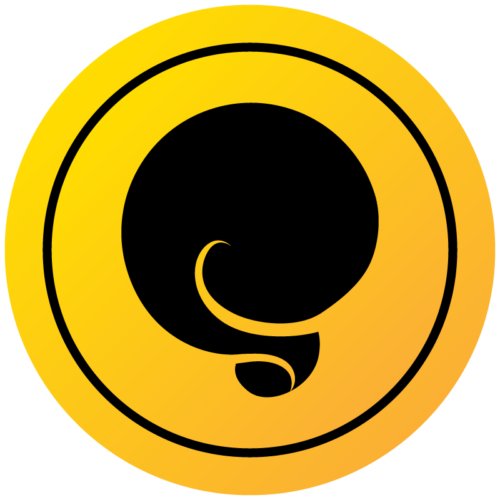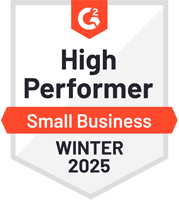Looking back at 2016 statistics, it’s safe to say writing creative headlines will have a huge impact in 2017. We now know that readers only share content that touches them in a personal way.
The Content Marketing Institute has published a new 2016 report for content marketers. The study shows that:
[sqcta text=”72% of B2B marketers continue to be heavily focused on creating engaging content, citing it as the top priority for their content creators over the next year.” type=”blockquote” color=”gray” ]
We’ve created an infographic revealing the most important headline tricks for 2017 that all writers need to keep in mind if they want to improve their work.
Of course, a well-crafted headline will help you get readers’ attention, but that’s not the only thing you should pay attention to. Once you lure them in, you have to keep them interested for the duration of the whole article. That, and you need to learn how to properly promote your content online, which is something we can help you with.
Think of your headline as the sales pitch for the article. It needs to be irresistible. It has to form a connection with whoever is reading it.
It’s your only chance to convince people to share it or read it. I don’t want you to miss this opportunity, so I want to show you how to make the most out of your headlines.
Here are 11 tips you should keep in mind in the process.
[sqcta text=”The First and The Last 3 Words Of Your Headline Matter The Most” type=”bullet” color=”yellow” cnt=”1″]
You already know that people don’t actually read articles from start to finish. They rather scan them.
But did you know that people scan headlines as well? Shocking, I know.
In this blog post by KISSmetrics, Bnonn, who is a headline expert, claims that people read only the first and last three words of a headline. This basically means that the ideal headline – in a world of perfectly crafted blog posts – should have six words.

How many times have you seen an article with a six-word count title? I will answer this for you: Too rare to even remember it.
You don’t have to take things at face value, though. It’s perfectly fine if your headline has more than six words, as long as the first and the last three convey the essence of the article.
[sqcta text=”Use Long-Tail Keywords” type=”bullet” color=”yellow” cnt=”2″]
The whole point of spending time writing creative headlines is so that people click and read your article. But before they get to decide whether your headline is worth their click, they have to find it.
That’s why you should use a long-tail keyword in your headline. You want people to find your article in search engine results as well.

A long-tail keyword is a specific phrase that is more likely to attract targeted visitors to your website. These usually don’t have that much competition. Also, you’ll attract more quality traffic.
Once you have a keyword for your headline, you need to make sure that you’ll place it as close to the beginning of the title as possible. That way, it will catch the readers’ attention.
However, don’t force it if the headline doesn’t sound right.
Also, when it comes to optimizing your title for search, you need to make sure that it doesn’t exceed 70 characters. Otherwise, the rest of it will be cut off in search engine results. You can see an example in the image below.

[sqcta text=”Don’t Copy Someone Else’s Headline” type=”bullet” color=”yellow” cnt=”3″]
After you’ve come up with a final version for your headline, you need to make sure that it hasn’t been already used. It can happen pretty often for people to discover that someone else already used the headline they’ve spent so much time creating.
It’s really easy to discover whether your headline has already been used. Just follow these steps:
- Go to google.com
- Copy your headline in the search bar and enclose it in quotation marks
- Hit Enter

Ta-da! Just like that, in a matter of seconds, you’ll know whether your headline is good to go or not.
Here’s what you should do if you find that a headline you’ve created has already been used. Just look up some synonyms for the words that you’ve used to see what word can be replaced so that the headline keeps its meaning.
[sqcta text=”Headline Capitalization Preferences” type=”bullet” color=”yellow” cnt=”4″]
A Conductor study exposed some interesting insights about readers’ preference on headline capitalization. Here are the most common capitalization styles that this study revealed:
- Lower case: Why you should spend more time on your headline. Only the first letter of the first word is capitalized.
- Capitals: WHY YOU SHOULD SPEND MORE TIME ON YOUR HEADLINE. Screaming mode on.
- Sentence case: Why You Should Spend More Time on Your Headline.
The data showed that a vast majority of 64% of respondents preferred the sentence case. Surprisingly enough, 21% of respondents had a preference towards the use of capital letters (do people like being yelled at?).
What we recommend regarding headline capitalization is not scream at your readers. Ever.

The sentence case style is the one that is used most often, including by us at Squirrly. Here’s how to craft a creative title using this style:
- Capitalize the first and last word
- Capitalize nouns, pronouns, verbs, adjectives, adverbs and subordinating conjunctions
- Lowercase “to” when it’s part of an infinitive, all articles, prepositions, and coordinating conjunctions
Some people choose to capitalize all words in a headline. That’s fine as well.
[sqcta text=”Be Direct – Use You/Your” type=”bullet” color=”yellow” cnt=”5″]
According to this article by Buffer, the word “you” is the 5th most popular word used in viral headlines. That says a lot, doesn’t it?
The goal of your content should be to help people. That’s why you should use the second-person pronoun. The articles you write should be about the reader and not about you. The use of “you” will also help you form a connection with the reader.

Here are some headline examples that’ll show you the impact of using “you”:
- 5 Ways to Save Money When Going Shopping vs. 5 Ways You Can Save Money When Going Shopping
- How I Made My $1 Million In Just 6 Months vs. How You Can Make Your First $1 Million In 6 Months
Can you tell how much more relatable and better the second ones sound?
[sqcta text=”Use Brackets” type=”bullet” color=”yellow” cnt=”6″]
HubSpot found that “Headlines with bracketed clarifications (e.g. [photos], [interview], [slideshow], etc.) performed 38% better than headlines without clarifications”. This demonstrates that a reader is more likely to click on your headline if they know what to expect.

For example, [Template] is the bracketed term that managed to get the highest amount of views for articles. Don’t limit yourself to using only this one, though. Try multiple terms so that you can see which ones your audience will react best to.
Bracketed clarifications will not only bring you more clicks. As HubSpot found, it will increase your conversion rate and engagement. So next time you’ll create a headline, don’t forget about using brackets.
[sqcta text=”Pique Curiosity” type=”bullet” color=”yellow” cnt=”7″]
How can you do that? It’s simple.
You ask a question.
By doing this, you’re inviting readers to take part in the conversation. But be careful: you need to ask a question that your readers won’t be able to respond with “no.” If they do that, then you’ve lost because you just gave them a reason not to click on your article.
Also, the reader needs to be able to answer the question in their mind almost immediately. Otherwise, it will leave them confused.
A powerful question headline will create that irresistible desire of wanting to read the article.
So, do your readers need to be able to answer the question in a proper way? The answer is no. If they can’t answer the question, then your headline is a winner because you have just created an information gap.

The question you’re asking also needs to empathize with them and make them curious about the answer.
I found some good examples that can inspire you:
Why do Chinese URLs Use Numbers, Not Letters?
How to Eat on Less Than $1.00/meal
How to Talk to Your Angriest Customers
The Countries Where It’s Easiest To Become A Self-Made Billionaire
[sqcta text=”Use a Headline Analyzer” type=”bullet” color=”yellow” cnt=”8″]
My favorite headline analyzer is the one from CoSchedule. It’s free, and it’s incredibly easy to use. You type in your headline, click on Analyze Now, and you’ll receive a score for your headline in a matter of seconds.

If it weren’t for this tool, I would have no idea if my title is powerful enough.
Below the score, you’ll get plenty more data about your headline, such as:
- Word balance. This looks at the overall structure, grammar, and readability of your headline. You also get tips that you can use to improve your headline.
- Headline type
- Length analysis
- Sentiment. You want your headline to show positive sentiment. People react better to these kinds of titles.
It will also show you a preview of how your headline will look on Google search results and as an email subject line, which I think it’s kind of cool.
Remember how I mentioned at the beginning of the article that only the first and the last three words matter? CoSchedule’s headline analyzer will highlight those exact words so you can see whether the wording sounds right.

[sqcta text=”Emotions Drive Action” type=”bullet” color=”yellow” cnt=”9″]
There’s no doubt about that.
Certain words perform better than others. You can find here 180+ power words that you can start using right now to make your headline better.
You can also try this emotional marketing value headline analyzer.

A practice that works really well is the use of superlatives. Here are some positive superlatives that you can use: best, always, fastest, easiest, most, greatest, largest, funniest, strongest, bigger, ever, top, perfect.
There are also negative superlatives, which actually perform 30% better than the positive ones. Here are some of them: never, no one, no way, worst, nothing, by no means, none, stop, avoid, don’t.
Doubt and fear are powerful negative emotions which make people take action, so don’t be afraid to resort to them.
[sqcta text=”Use Numbers” type=”bullet” color=”yellow” cnt=”10″]
Even though I’m not a numbers person myself (I love me some letters instead), I still love numbers in a headline. And I’m sure you do too.
The reason behind this is that numbers somehow give us a sense of logic.

Here are some facts you should know about numbers and proper title names:
- Low numbers will illustrate how concise your article is
- High numbers show that it’s comprehensive
- Odd numbers are more authentic than even numbers
- Numbers are like a specific promise to the reader
[sqcta text=”State the Benefit” type=”bullet” color=”yellow” cnt=”11″]
If the reader can’t see the benefits right from the title, then they won’t even bother clicking on it. Be specific about it.
The headline should answer this question from the reader’s perspective: What’s in it for me?
What’s your biggest selling point? Put it in the headline. It can be something like Lose 15 Pounds In Only 1 Month by Doing These Exercises.

You can think of a problem that your audience has and that you can solve. Come up with a topic around it and then just start playing with the headline.
The Best Way to Write Creative Headlines Is to Never Stop Writing (And Learning)
You may have to write down up to 25 headlines until you’ll find a winner. And even then, chances are you’ll still have some doubts.
But that’s okay. That’s how we learn more about how our readers react and interact with our content. The important thing is to keep moving forward.
I hope that these tips will inspire you to write even better and creative headlines.
If you liked this article, I’d really appreciate it if you shared it on social media. Or you can even leave me a comment or a question.
See you next time!













